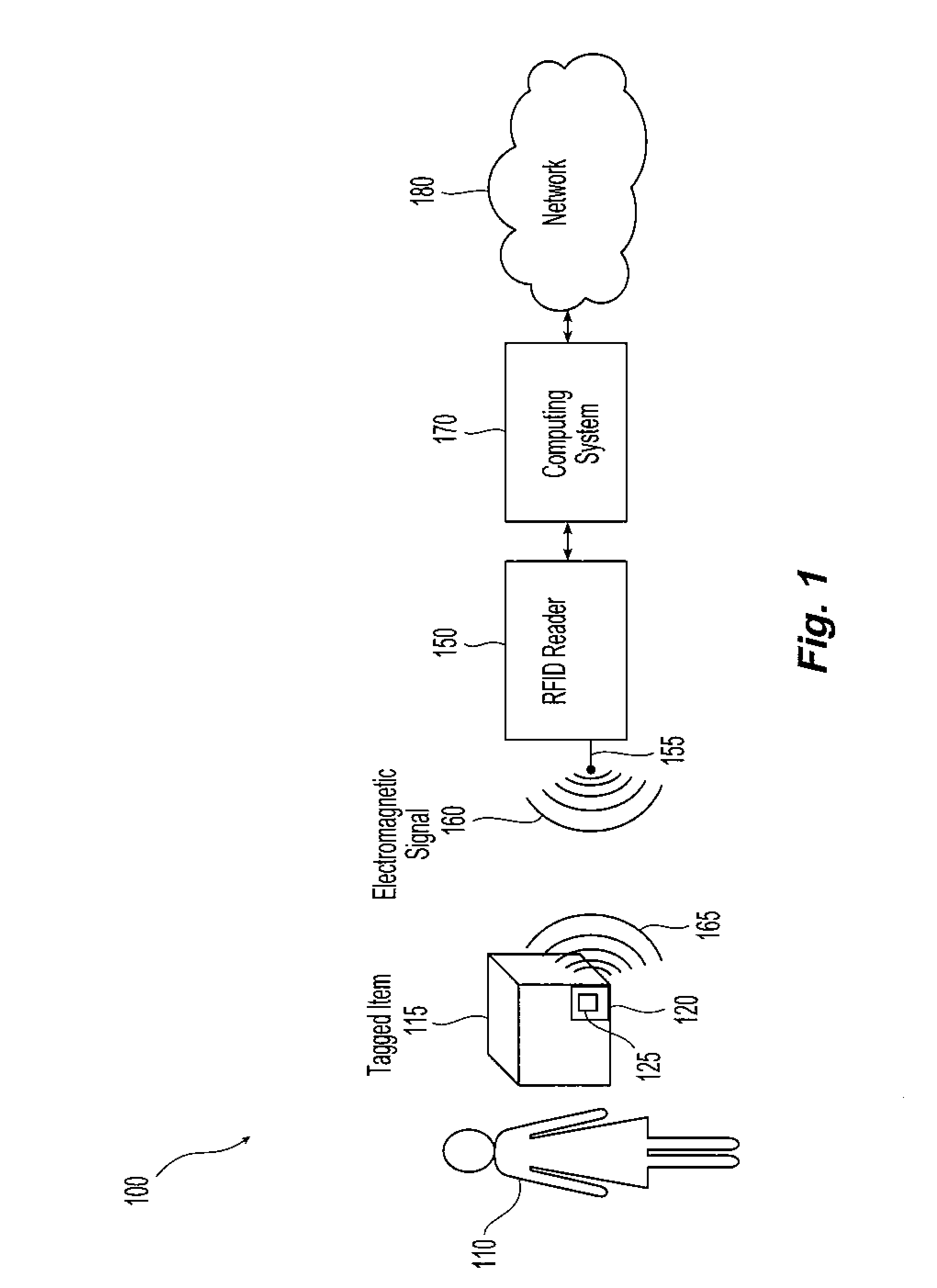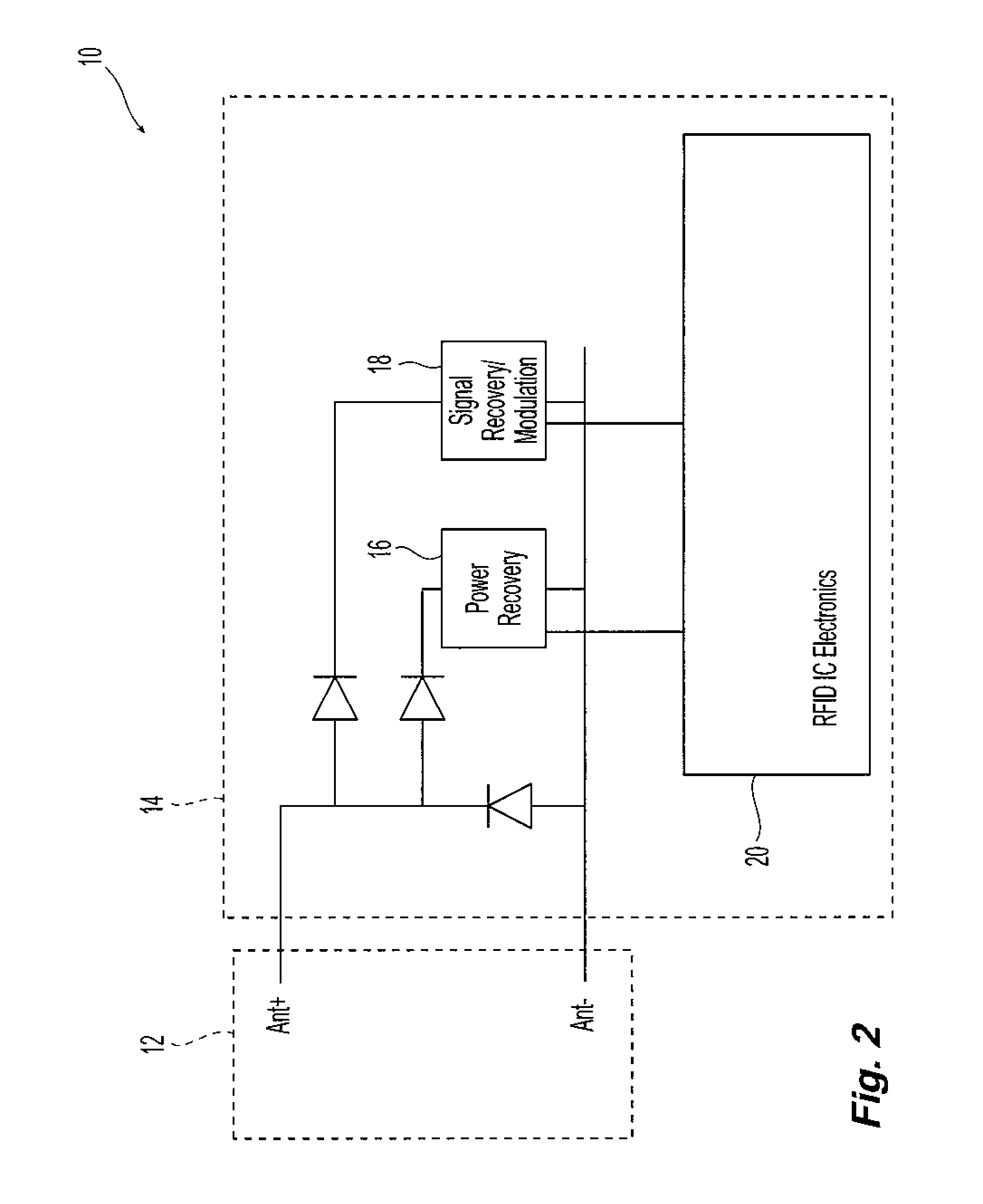System and method for varying response amplitude of radio transponders
a radio transponder and response amplitude technology, applied in the field of radio frequency identification systems, can solve the problems of raising consumer privacy concerns, killing commands, and limiting the efficiency of communication with tags
- Summary
- Abstract
- Description
- Claims
- Application Information
AI Technical Summary
Benefits of technology
Problems solved by technology
Method used
Image
Examples
Embodiment Construction
[0021]Referring initially to FIG. 1, an exemplary embodiment of a radio frequency identification (RFID) system 100 for use in accordance with the present invention is illustrated. A user 110, for example a person, customer, worker or cardholder, carries an item 115 that has at least one attached wireless or RFID tag 120. The RFID tag includes an antenna 125 and a chip (not shown) in communication with the antenna. The chip includes circuitry that enables the recovery of data and, in the case of a passive or field-powered tag, power from the signals present on the antenna as well as circuitry that enables signals to be sent from the tag to an RFID reader 150. The chip may also include additional circuitry enabling, for example, changing chip operating mode, processing of incoming data or processing of outgoing data. Thus, the chip includes diode detection, logic and memory circuits. The system also includes an RFID reader 150 that includes an antenna 155. Suitable RFID readers or bas...
PUM
 Login to View More
Login to View More Abstract
Description
Claims
Application Information
 Login to View More
Login to View More - R&D
- Intellectual Property
- Life Sciences
- Materials
- Tech Scout
- Unparalleled Data Quality
- Higher Quality Content
- 60% Fewer Hallucinations
Browse by: Latest US Patents, China's latest patents, Technical Efficacy Thesaurus, Application Domain, Technology Topic, Popular Technical Reports.
© 2025 PatSnap. All rights reserved.Legal|Privacy policy|Modern Slavery Act Transparency Statement|Sitemap|About US| Contact US: help@patsnap.com



